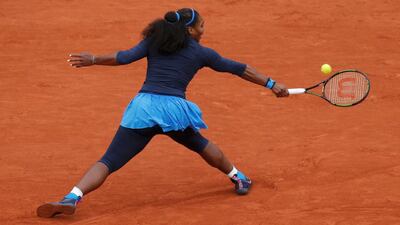From now until the end of July is a time of year that always excites the sports aficionado in me. Like millions of other fans around the world, I am looking forward to the French Open and Wimbledon tennis championships, the Monaco Formula One Grand Prix, the Tour de France and, of course, the final of the Uefa Champions’ League. This year we even have the Fifa World Cup.
It is quite a busy programme considering that beyond my love for sports and athletic performance, I also wear my neuroscientist hat when I watch the games. Having specialised in the mental preparation and performance improvement of athletes and executives for nearly two decades, there is always plenty for me to learn during these events.
The audience does not always realise quite how high the stakes are for athletes who need to cope with more pressure than the people watching, cheering or criticising them are ever likely to face. Could you see yourself performing your daily job in arenas filled with tens of thousands of people loudly expressing their opinion on your performance? Not to mention the millions of viewers sharing it on social media. This is what I call pressure.
With that in mind and as the qualifying rounds of the French Open get underway this week, I can share some of the things that puzzle me about the sport of tennis. Why, during tennis games, are spectators required to be quiet and stay still? Why do players who become furious when members of the audience speak, cheer or move, seem not to mind their opponent being vocal?
When I lived in South Florida, I had the opportunity to work with tennis players. At first, I was told that silence during the game is a tradition, as in golf. As a martial arts practitioner, I like and respect traditions. But when pushing the research further, I found that being able to hear the sound made by the ball when it is hit provides key information about its spin and trajectory.
Many tennis players have reported that visual information alone is insufficient to read the trajectory of a ball that can come at more than 200 kilometres per hour. Providing the brain with information coming from multiple senses (auditory and visual in this case) can help a player predict where the ball will go.
____________________
Read more from Olivier Oullier:
It might be too late to help Avicii but technology can help treat depression
Could your morning cup of joe be considered a performance-enhancer?
We can all do our bit to stop antibiotic overuse
____________________
It improves what neuroscientists call "sensorimotor co-ordination", the ability to co-ordinate movements with the information provided by the senses. This explanation makes a lot of sense when it comes to justifying the need for the audience to be quiet but should also lead opponents not to scream, as it can mask precious information coming from the sound of the ball.
Other athletes can perform in environments that are far noisier, more perturbing and sometimes more hostile than tennis courts. Football players manage to score penalty kicks with a full stadium booing them and sometimes with thousands of people moving behind the goal. These are powerful auditory and visual distractions.
Or take high jump. It is traditional for the audience to clap their hands to accompany the athlete as he or she runs before jumping. This clapping always ends up being offbeat with the movements of the legs of the athlete, who still manages to jump other a two-metre-high bar.
So, is it because tennis players are not as good as other athletes at concentrating and keeping their cool when things are changing in their environment? Remember how Ivan Lendl lost it when Michael Chang started to serve and move in an unconventional fashion at the 1989 French Open?
One hypothesis is that tennis requires different kinds of tactical skill and leaves more room for error. Players can switch off for an entire set and still win the match. This is not the case in many individual or team sports. Take judo or boxing for instance. If a fighter is distracted for a tenth of a second, the opponent can score a winning point or knock you down.
It is (almost) the same with "sudden death", when team sport games go into additional time. There is no room for distraction, hence the preparation of athletes in the latter sports include building stronger concentration.
Some performance experts argue that athletes in sports with “sudden death” are harder to distract. This is something I have observed in athletes’ brains, thanks to neurotechnologies that allows us to monitor concentration and distraction in real-time.
Unsurprisingly, these results are gaining traction in the business sector, which is always keen to use insight from the sporting world: from team-building to measuring and improving concentration and performance.
And what sport you play might just hint at how easily you can be distracted.
Professor Olivier Oullier is the president of Emotiv, a neuroscientist and a DJ. He served as global head of strategy in health and healthcare and member of the executive committee of the World Economic Forum


